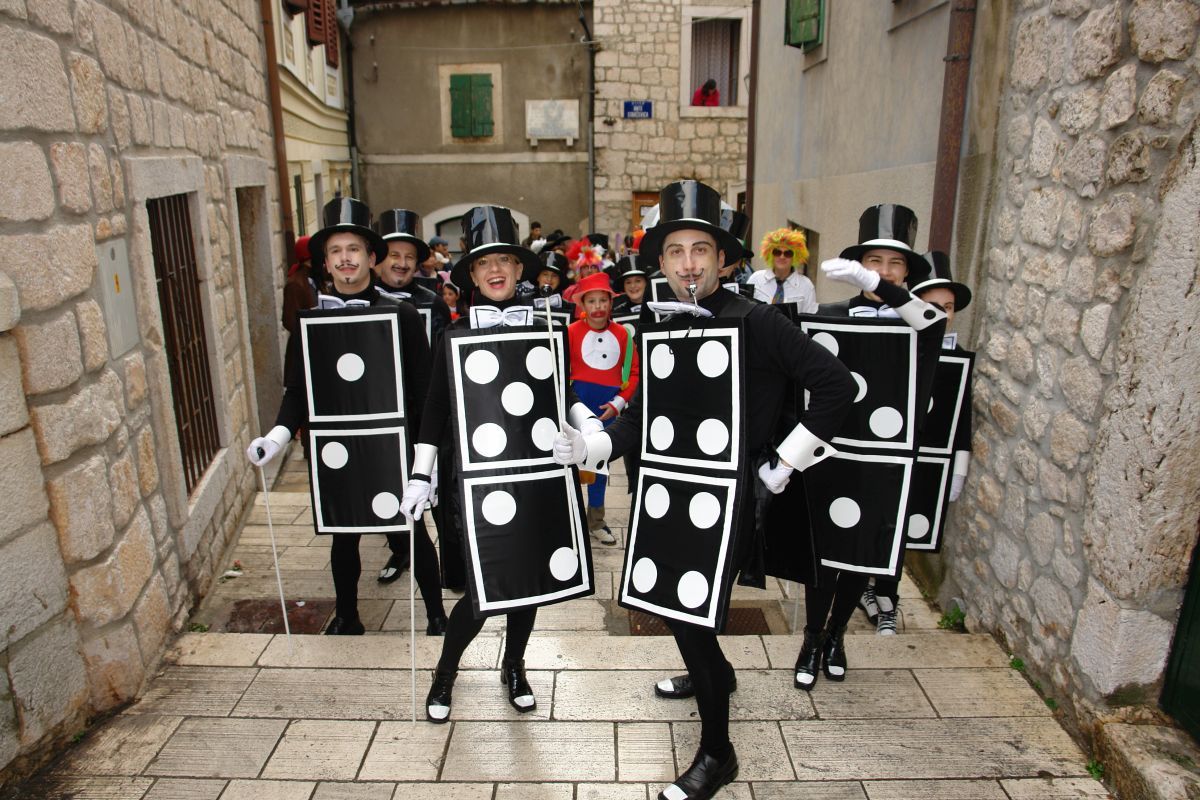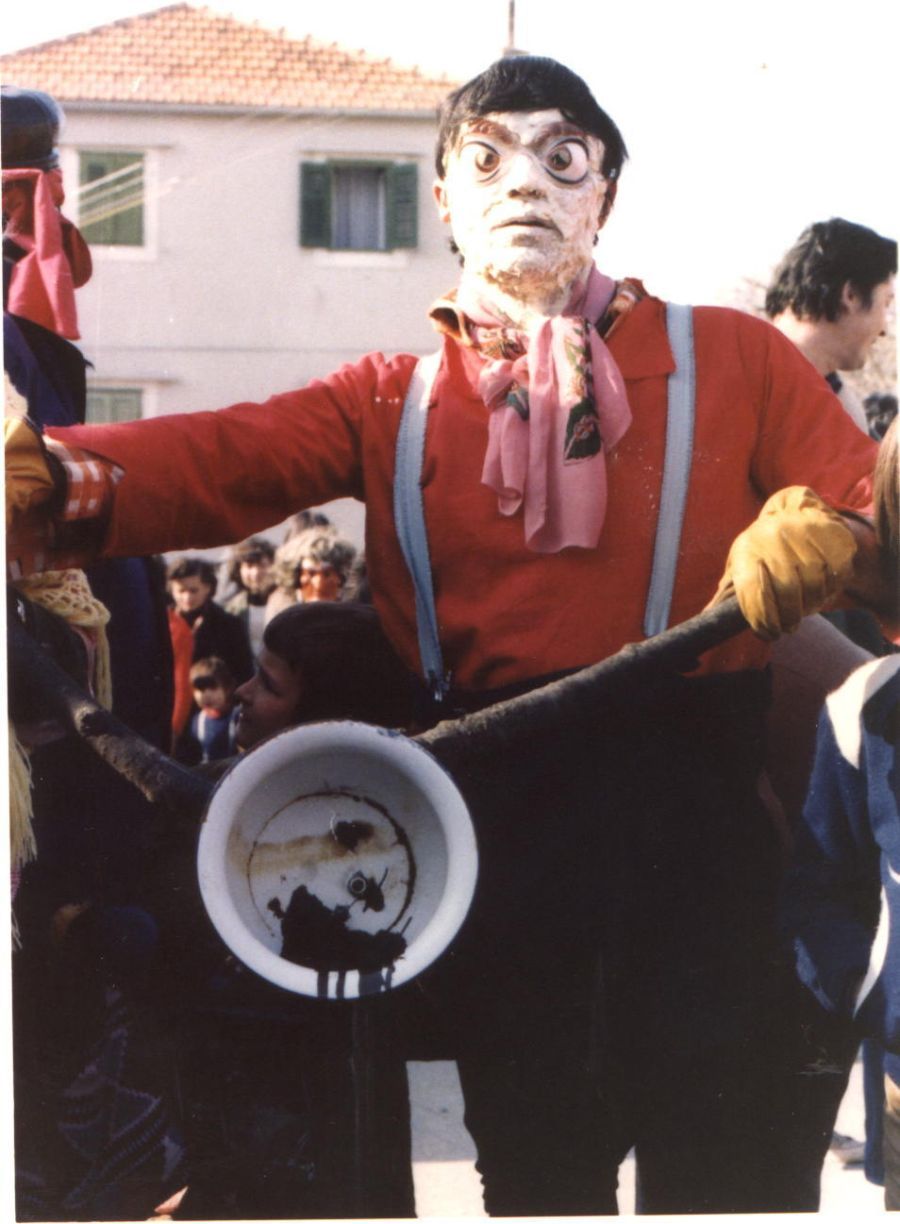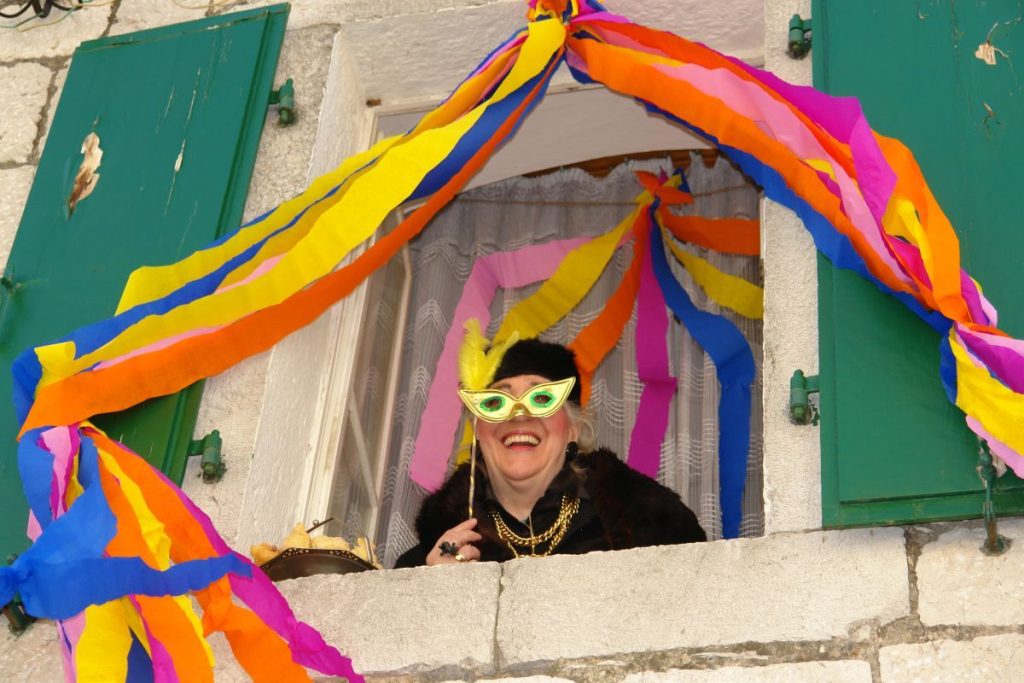Traditions of the carnival time came to Imotski with the descendants of the Venetians, while they still resided in significant numbers in these parts of Dalmatia. After the initial imitation of such carnival customs, a carnival tradition, or simply called “mačkare” were soon adopted and got some authentic features.
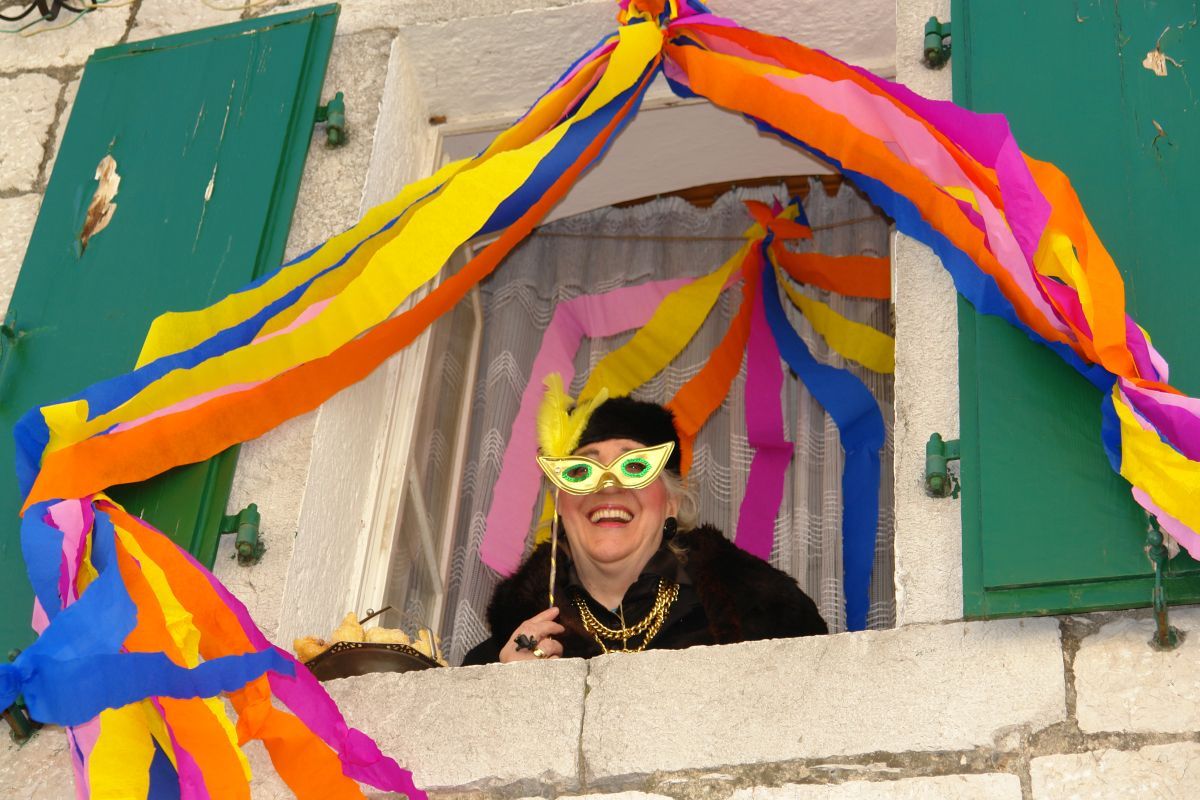
It is interesting to follow some of the features that have characterized the carnival in Imotski throughout history. Even as there still was a visible categorization of the population to social classes, the carnival period was celebrated by all people, everyone according to his abilities. The goal of the carnival was to have fun and bring joy to all people, so it was a time, when all the visible boundaries within the population simply disappeared. At leas for the time of the carnival. Of course, wealthy families took care for richer and more luxurious costumes, which were at that time purchased throughout Europe. It was a paramount to obtain a more representative costume, which was sending the desired message.
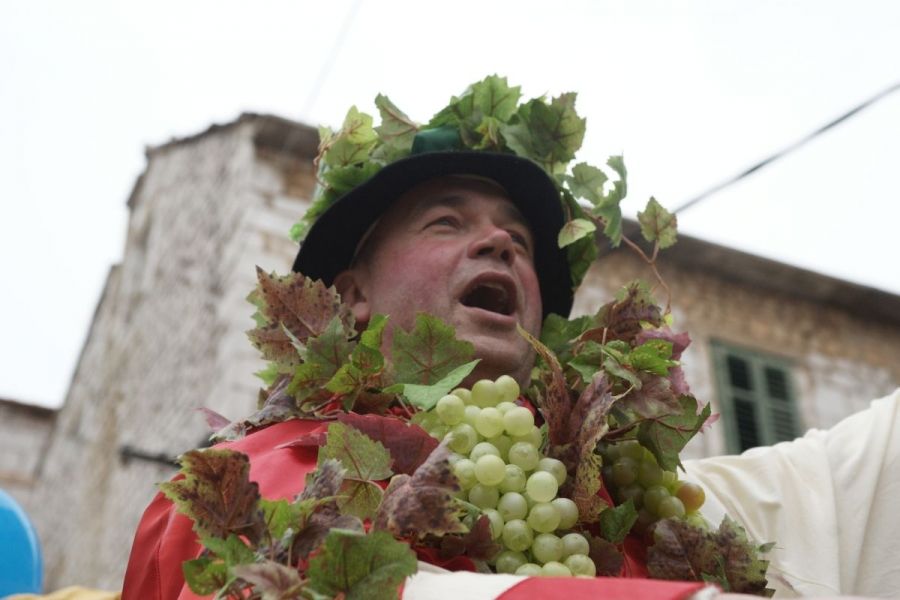
One of the special features of the Imotski Mačkare Carnival was Bako. Bako was created after the old Roman God Bacchus, who was tied to wine, fertility and pleasure. He was an indispensable part of each carnival season in Imotski. Bako was imbodied by a person, who deserved it with his qualities and character. In other words, Bako has to be well known, respected and sociable, loving jokes, fun and joy. He has to be a proven fan of wine and food, which is in the spirit of devotion to the ancient Roman tradition. He is dressed in a long white robe, to be visible in the crowds.
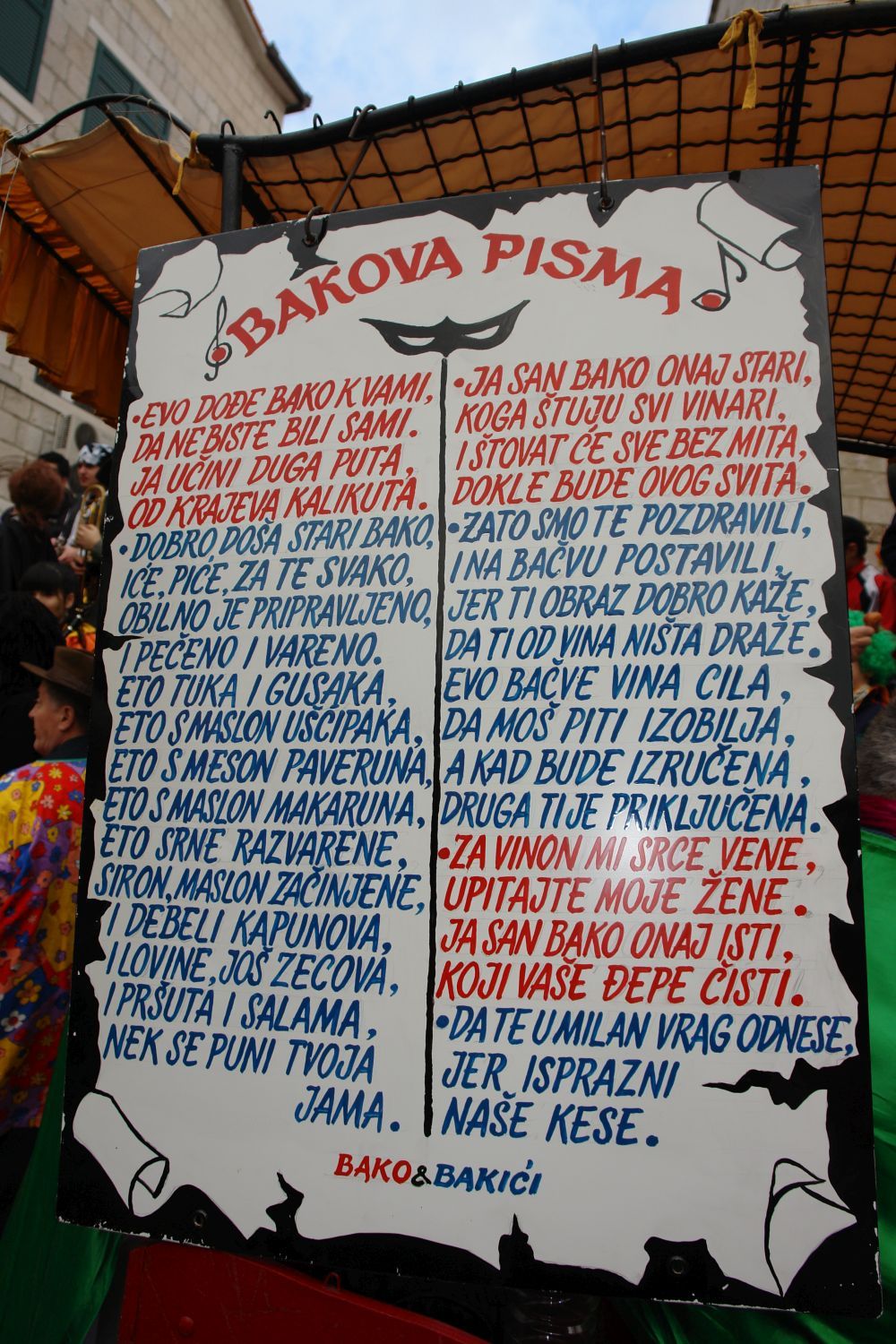
His face has to be flushed, to prove his love for good wine and he is wearing a crown made of wine. Usually, he sits on an old wooden barrel, a kind of throne. He holds a pot or a “Bukara”, constantly toasting with the gathered crowd, pouring jokes up until he starts to sing.
